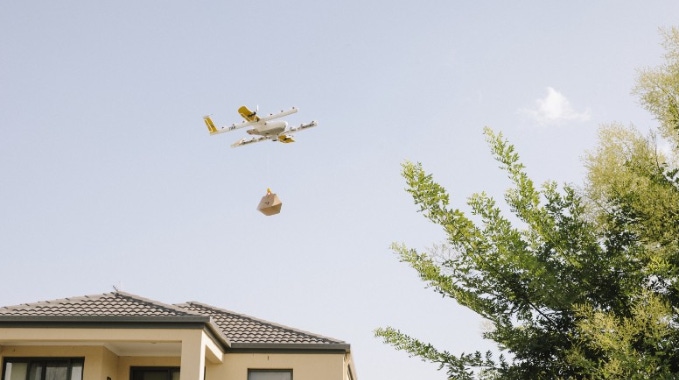Amazon has announced another step forward towards the promise of drone delivery and the ambition of a human free business.
June 6, 2019

Amazon has announced another step forward towards the promise of drone delivery and the ambition of a human free business.
Speaking at the re:MARS Conference in Las Vegas, Amazon’s show looking at machine learning, automation, robotics and space, the eCommerce giant has suggested it is close to introducing autonomous drones to its delivery force. Reports suggest the business could be ready to scale during 2020.
“Can we deliver packages to customers even faster?” said Jeff Wilke, CEO of Amazon Worldwide Customer. “We think the answer is yes, and one of the ways we’re pursuing that goal is by pioneering autonomous drone technology.
“We’ve been hard at work building fully electric drones that can fly up to 15 miles and deliver packages under five pounds to customers in less than 30 minutes. And, with the help of our world-class fulfilment and delivery network, we expect to scale Prime Air both quickly and efficiently, delivering packages to customers within months.”
Looking at the wider business model, not only does this enable Amazon to further streamline delivery operations, one of the largest overheads at the business, but it potentially takes it towards new revenues.
With the promise of delivery within 30 minutes, there is potential for Amazon not only to move into the same day delivery world, but also offer services for takeaways, coffee shops and supermarkets. If the focus of this service can be honed, perishable items can be factored into the logistics mix.
And this is not the only new idea which Amazon is testing to get rid of that pesky reliance on fragile humans and their troublesome right to rest.
Scout is another interesting development. Here, the team are developing a small, autonomous robot with six wheels, which will be able to deliver small packages. Currently the small robot is being tested in Washington, accompanied by one of the Amazon testers, but it does look like it can deliver on the same promise as the drone; small deliveries in the local area.
It’s not hard to see the greater ambitions of the Amazon business here. Yes, this is one of the most influential companies on the planet, one of the most trusted brands, revenues are astonishingly large, but it is actually quite a poor profit generator. Over 2018, roughly 59% of profit could be attributed to the 12% share of revenues brought in by the cloud computing business AWS.
Total sales | Percentage | Net income | Percentage | |
Consumer | $207,119 billion | 88% | $5,125 billion | 41% |
AWS | $25,655 billion | 12% | $7,296 billion | 59% |
Total | $232,774 billion | $12,421 billion |
The core eCommerce platform might have made Bezos and Amazon famous, it may well have offered the brand recognition and scale which is enabling profitability elsewhere, but it is not a massive money maker.
There is a solution to this financial conundrum; generate more efficiencies in the most expensive part of the business. At Amazon, as with everywhere else, the biggest financial outlay is down to us, the human employees of the business. Not only do we insist on getting paid, but also require sleep, time to go to the toilet and those irritating laws mean Bezos has to allow his staff a break to eat, the cheek!
Reports constantly emerge that Amazon is a bit of a horror place to work, but Bezos and co. seem to be trying to do something about that; removing the necessity for humans.
About the Author(s)
You May Also Like








.png?width=300&auto=webp&quality=80&disable=upscale)


_1.jpg?width=300&auto=webp&quality=80&disable=upscale)


.png?width=800&auto=webp&quality=80&disable=upscale)